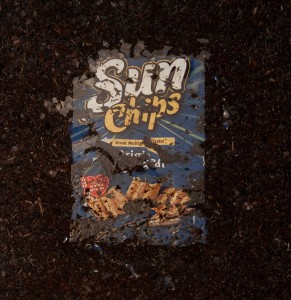
In a first-time feat, Woods End Labs designed a system to film over 14-weeks the composting of a Chip Bag. The video became a national TV ad on American Idol. The bag was eventually withdrawn from the market following USA consumer complaints.
The day before Earth Day 2009, fans of American Idol were wowed by a TV ad showing a SunChips bag disappearing and turning into compost, right before their eyes. The ad was genuine. It took stitching together 8,800 individual images shot within a see-through compost chamber, designed and built at Woods End Labs. Frito-Lay declared “the World’s first Compostable Chip Bag,” with full release promised by Earth Day 2010, ushering in — it seemed — an exciting new era for compostable consumer packaging.
Today, store shelves are conspicuously absent of the product — or just about anything like it.
News buzz in the sustainable packaging industry may partly explain the double act of disappearance. British giant Innovia Films Ltd (IFL), in multiple legal actions filed in the United Kingdom and the European Patents Office, has charged that Frito-Lay’s innovations are the rightful property of IFL. Innovia has successfully petitioned Brussels to block one of Frito’s European patents on the bag, and has pressed for free license rights to Frito’s technologies. (IFL has launched its own version of the compostable chip bag, using metallized cellulose instead of PLA. ASTM D6400 tests have shown both types of products break down in the same time-frame.)
Even more recently, Frito-Lay has filed a complaint for Declaratory Relief against Innovia, asserting original invention rights. Sustainable packaging advocates are clearly watching the outcome. We are not in a position to comment on the legal merits of the cases. One thing is clear, Frito-Lay was first in the chip marketplace with an authentic PLA-based compostable product.
Postscript: Woods End continues to work with many firms testing and characterizing the unique environmental traits of bioplastics. Yet, interest in compostable films appears to be shifting to higher ground … reusability and carbon footprint. (Research for this article based in part on GreenPatentBlog.com, Foodnavigator-usa.com, Sustainable Packaging Forum, and FoodProductionDaily.com /ps/wfb)

